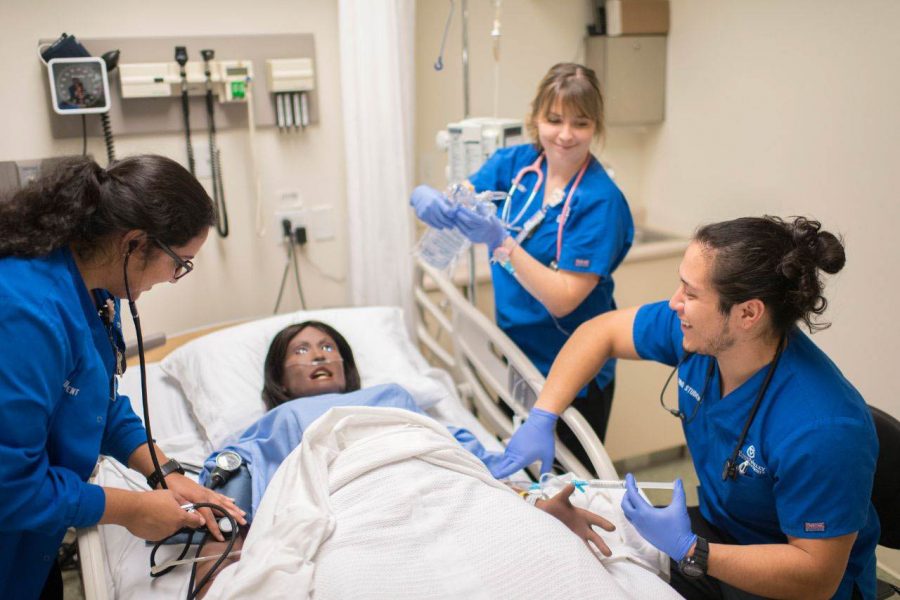GV Interprofessional Simulation Center receives accreditation
Jan 9, 2023
Grand Valley State University’s Interprofessional Simulation Center recently received first-time accreditation from the Society for Simulation in Healthcare (SSH), the largest healthcare simulation accrediting body in the world. This five-year accreditation stands until 2027.
Part of the Daniel and Pamella DeVos Center for Interprofessional Health Sciences on the health campus, the 68,000 square foot simulation center houses a variety of “state of the art” technology aimed at improving the skills of students, faculty and healthcare professionals.
Simulation center director Katie Branch said to achieve accreditation the SSH examines many different standards divided into five categories called the Core-ARTS model. The sections include core, assessment, research, teaching/education and systems integration.
In the “core” section, SSH looks for seven core operational standards. These include mission and governance, program management, research management, human resources, program involvement, integrity and expanding the field.
“They (the accreditation body) make sure that simulation centers are practicing at the top of their game, making sure that learners are getting the best possible experience,” Branch said. “We have gone through that accreditation process and shown that we meet those standards.”
Branch said some of the other standards that must be met include evidence-based teaching and appropriate use of associated technologies. To assess policies and teachings, the SSH conducted an on-site review of the GVSU Interprofessional Simulation Center in the fall of 2022.
The simulation center utilizes “manikin” based technology, where life-sized patient simulators allow students to practice a wide range of skills such as taking vitals, medication delivery, IV placement, resuscitation and patient assessment. The manikins can be programmed to have a wide variety of medical conditions and even respond to medical mistakes. This promotes situational judgment and accuracy from students.
One of the main goals of the center is to provide students and healthcare providers with a safe space to learn and make mistakes in a less consequential environment.
“They make these simulations so well, and they know what we might see in the hospital and they kind of gear it towards that,” said nursing student Dunya Kizy. “Even doing the little things, you start to gain confidence in doing other things as well.”
Kizy said having the opportunity to work hands-on in the simulation in addition to her traditional classroom education has been beneficial for learning the process of patient care.
“I don’t feel as fearful,” Kizy said. “Even stepping into a patient’s room, it’s very nerve-wracking, because they’re real people who are sick. At the end of the day, having simulation in the curriculum is really, really nice. It enables us to just be able to learn more and learn from our mistakes so that we can be better nurses in the future.”






















